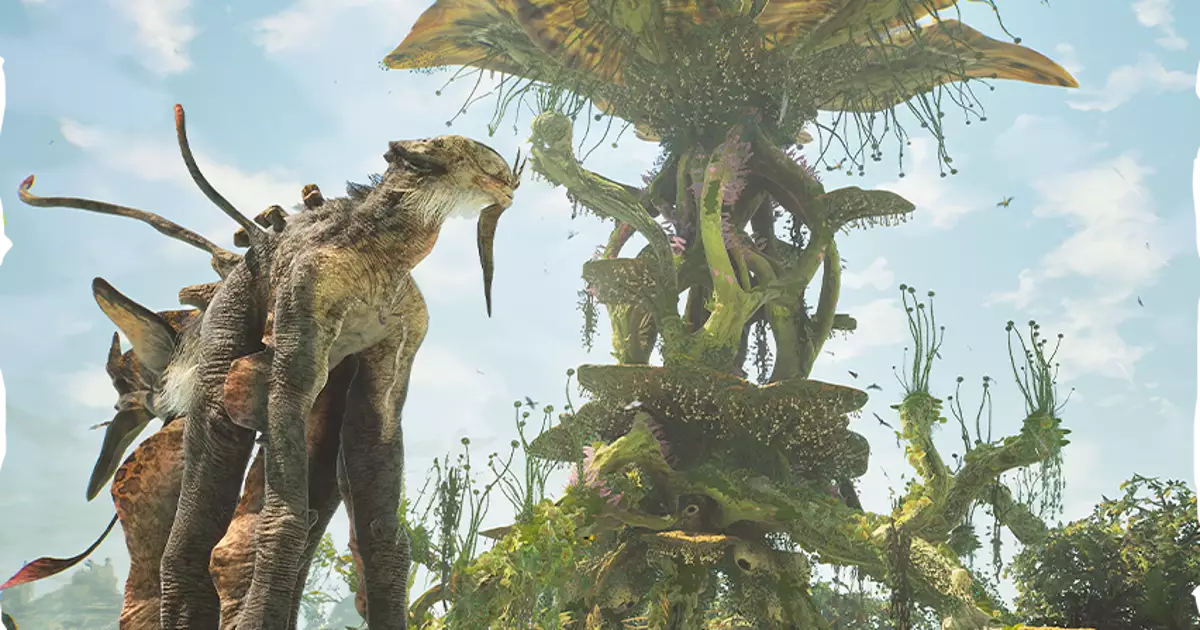The upcoming game Towers of Aghasba, developed by Dreamlit, has garnered attention for its vibrant open-world design and its rich, ecologically themed gameplay. Set for release on November 19, 2024, this game invites players into a lush environment filled with equatorial landscapes and wildlife that evokes a sense of adventure and discovery. However, as eagerly anticipated as it may be, a critical evaluation reveals a mix of excitement and skepticism regarding its premise, mechanics, and thematic choices.
Towers of Aghasba places players in the role of a junior architect belonging to the Shimu tribe, tasked with revitalizing a lush world decimated by a mysterious force known as the Withered. This setting offers not just a visual feast of pastel colors and fantastical creatures but also beckons players to engage in a range of activities such as exploration, village building, gardening, and even the delightfully grotesque act of combating lumbering megasloths. Right off the bat, one cannot help but appreciate the ambitious scope of this game—a hybrid of community-building and personal adventure.
While the game promotes eco-centric themes, it directly contrasts with the unfurling storyline of destruction and survival. It offers players the option to either protect the whimsical fauna or exploit them for resources, which raises an intriguing yet disconcerting question about ecological ethics within a gaming context. This duality between nurturing and vanquishing reflects the complexities of real-world environmental challenges, albeit wrapped in a comfortable, albeit exaggerated, veneer.
Furthermore, this juxtaposition sings well with a segment of the gaming community that yearns for more environmentally conscious narratives. Nevertheless, the risks of falling into cliche environmentally-focused tropes loom large. The game’s vibrant depictions may come across as disingenuous if they lack an authentic representation of indigenous inspirations. One cannot ignore the sensitive nature of cultural representation and appropriation in gaming narratives. The tribal themes portrayed appear engaging on the surface, but the reliance on holographic building templates feels reductive, undermining the organic essence they aim to capture.
Diving deeper into the gameplay mechanics, Towers of Aghasba features real-time combat and crafting systems—key components that have been widely adopted in survival-style games. The incorporation of co-op support adds another layer, inviting collaboration among players as they attempt to fend off the menacing entity of the Withered, reminiscent of experiences common in titles like Ghost of Tsushima.
While the crafting system is an appealing draw, one has to question its execution. By not being a primary focus, perhaps the developers risk overshadowing the potential for deeper explorations of survival and resource management. Additionally, the crafting of weapons and elixirs might suffer from a lack of innovative depth, which could diminish long-term engagement beyond initial playthroughs.
There is an undeniable charm linked to the potential ecological interactions within the game. Players may find themselves exploring diverse ecosystems and the vibrant life inhabiting them, from nurturing to capturing the ‘floofy pastel dragon’ in a way that reflects genuine curiosity about wildlife. This is akin to the immersive experience presented by games like Subnautica, where understanding and interacting with the environment become central to gameplay.
Yet, the enthusiasm may be underscored by skepticism about how effectively Towers of Aghasba will balance its various themes and mechanics. Will it rise above mere aesthetic charms and echo positive gameplay experiences, or will it succumb to the trap of being yet another surviving title clad in an eco-friendly facade?
Towers of Aghasba has the makings of an intriguing and visually engaging game steeped in environmental themes. The prospective challenges it presents reflect modern conversations about ecology and sustainability. However, it must tread carefully through the landscape of cultural representation and avoid falling into the pitfalls of oversimplified gameplay mechanics. The gaming community will be keenly watching how Dreamlit navigates these complex themes when the game launches in late 2024, as it could either energize or disillusion eager players seeking meaning in their digital adventures.


Leave a Reply